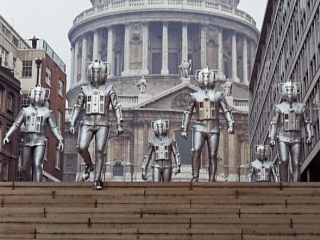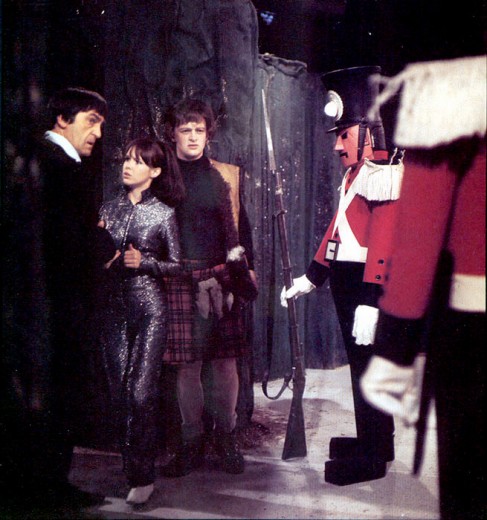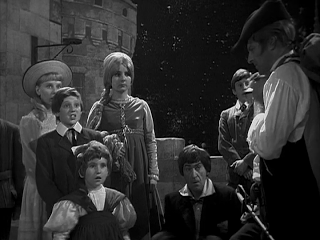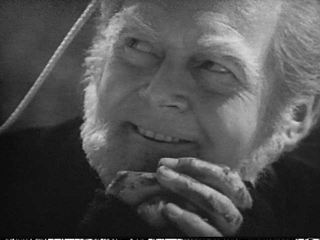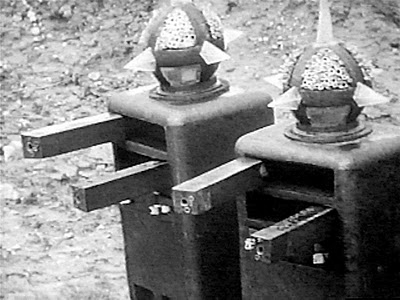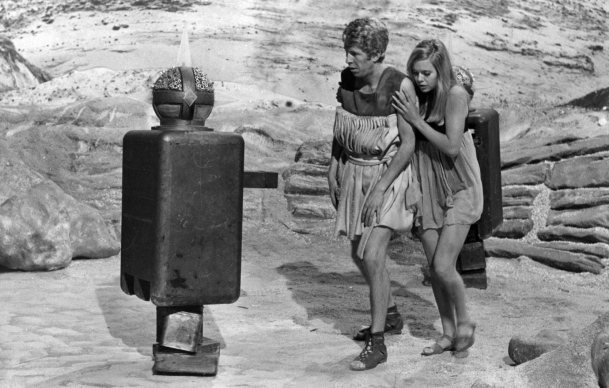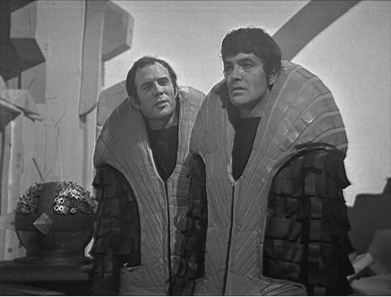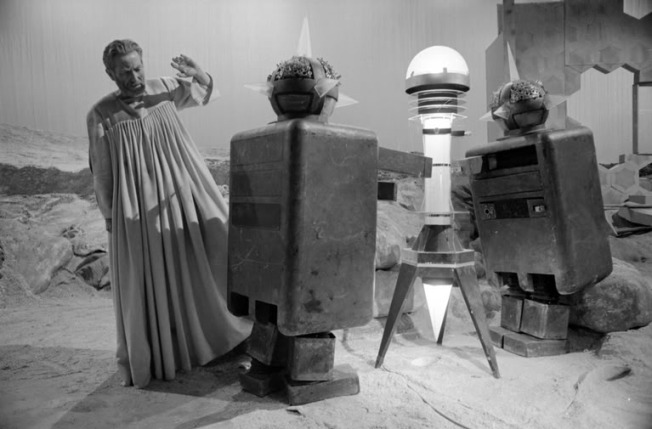Even with the recent recovery of nine missing episodes from The Enemy of the World and The Web of Fear, Patrick Troughton’s tenure as the Doctor still has 54 missing episodes, including four serials in which not a single episode is held – The Power of the Daleks, The Highlanders, The Macra Terror and Fury From the Deep. William Hartnell’s Doctor has 44 of his episodes missing, including six serials without a single episode – Marco Polo, Mission to the Unknown, The Myth Makers, The Massacre, The Savages and The Smugglers.
In the absence of so many stories, making an informed choice on the Top 5 serials for the First and the Second Doctors is both difficult and hypothetical. A brilliant soundtrack could mask poor visual representations, whilst a boring audio may hide a visually stunning masterpiece. Without seeing the moving pictures one can never be 100% certain that a story is as good as its reputation. All that being said, here’s the Doctor Who Mind Robber’s humble opinion of the Second Doctor’s Top 5 stories.
The recovery of five episodes and release of all six parts of The Enemy of the World on iTunes recently quickly lead to a reappraisal of this story’s worth. Previously only episode three had been held in the BBC Archives and released on the triple DVD set, Lost in Time. That episode was somewhat unrepresentative of the other five and caused many to underestimate the serial’s true worth.
The Enemy of the World was the only Season 5 story without monsters and not of the “base under siege” genre. Patrick Troughton’s dual role as the Doctor and the evil would-be world dictator, Salamander, allowed him to show another side of his acting skills, notwithstanding the rather dubious Mexican accent. Enemy was also Barry Letts’ Doctor Who debut and heralded the show’s first action scenes involving helicopters and hovercraft. Such adventures would become second nature during the tenure of the Third Doctor.
This will undoubtedly be a controversial choice however it’s one of my personal favourites. Only episodes one and three are held in the BBC Archives. The last story of Ben and Polly’s tenure as companions, The Faceless Ones is set in the ‘present day’ and features excellent location filming at Gatwick Airport in London. Pauline Collins appears as Samantha Briggs, a young woman from Liverpool who is searching for her brother who did not return from a package holiday to Rome. A psychological thriller about identity loss, it was sure to have heavily influenced Mark Gatiss’ 2006 episode, The Idiot’s Lantern.
One of the most highly regarded Sixties Dalek stories, The Evil of the Daleks was the first and only serial to be repeated in the UK during that decade. The repeat was written into the script of the Season 5 finale, The Wheel in Space, and the Season 6 premiere, The Dominators. The new companion Zoe was to view the Doctor’s thought patterns, presumably during the season break, and decide whether she wished to join the TARDIS Crew.
Yet another missing story, only episode two of The Evil of the Daleks is currently held in the BBC Archives. The story introduced the Dalek Emperor which was a direct spin off from the Whitaker penned Daleks cartoons in TV Century 21 magazine. The Dalek “human factor” is intriguing and like The Faceless Ones, undoubtedly influenced New Series Doctor Who. Robert Shearman’s Series 1 story, Dalek, has several nods to The Evil of the Daleks, whilst Gareth Roberts’ short novel, I Am a Dalek, revives the “human factor” in more than mere words.
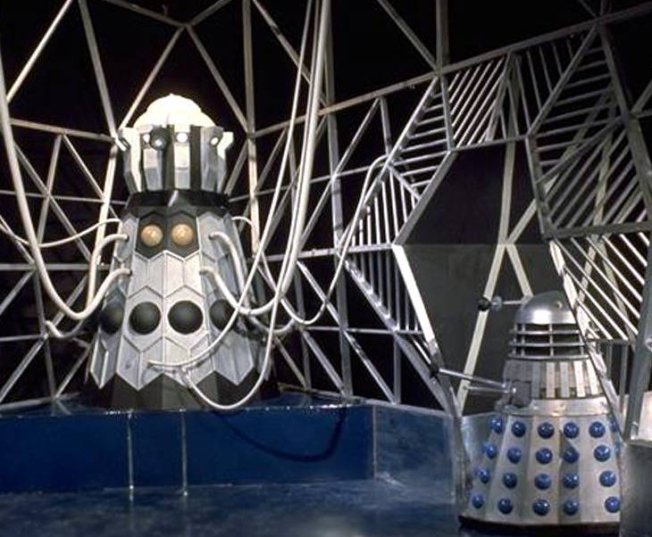
The Evil of the Daleks was the first Doctor Who serial ever repeated and the first and only repeat to be scripted into serials
2. The War Games
Patrick Troughton’s last serial as the Second Doctor, The War Games is a 10 part epic which forever changed the history of Doctor Who. Although the name of his home planet is not yet disclosed, the Doctor is revealed to be a Time Lord. A renegade Time Lord, the War Chief, has given the secrets of time travel to an alien race which seeks to conquer the galaxy. In their quest to build the best fighting force, human soldiers have been transported from Earth to fight a number of simultaneous wars. These discrete battle zones see engagements from the First World War, the American Civil War, Russo-Japanese War, English Civil War, Boar War, Mexican Civil War, Crimean War, Thirty Year War, Peninsula War, and Roman and Greek war zones.
Being unable to return all the War Games participants to their own time and space, the Doctor reluctantly calls in the Time Lords. Having himself been a renegade since stealing a TARDIS and taking to the universe, the Doctor is at last compelled to face justice for breaching the Time Lords’ Non Interference Policy. Jamie and Zoe are returned to their own times, with all but the memories of their first adventure with the Doctor wiped, and the Doctor is sentenced to exile on Earth. His knowledge of the TARDIS’s time travel functions is denied him, and he is forced to change his bodily form. The term “regeneration” has not yet been coined. So ends the monochrome era of Doctor Who and Patrick Troughton’s three year tenure as the Doctor.
An almost psychedelic trip through the land of fiction, The Mind Robber is just about as good as Doctor Who gets. This five part serial sees the Doctor, Jamie and Zoe caught in the world of children’s fairytales. They encounter Lemuel Gulliver, brilliantly portrayed by Bernard Horsfall, Princess Repunzel, Medusa, a Unicorn and a cast of Who created characters. Far from being what it seems, nothing is reality. Zoe and Jamie are transformed into fictional characters after Jamie had earlier had his physical appearance altered. The TARDIS explodes for the first time and the Doctor and his crew find themselves drifting in space. Zoe shows that being small in stature is in no way detrimental to fighting a 21st Century cartoon superhero, and Repunzel’s hair really is the strongest and most effective way of quickly scaling rocky cliff faces. It’s all brilliant stuff!
Vivien Fleming
©Vivien Fleming, 2013.


















